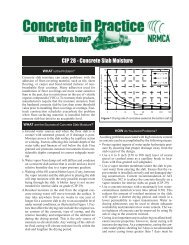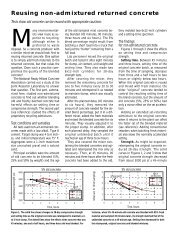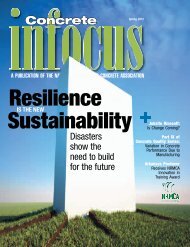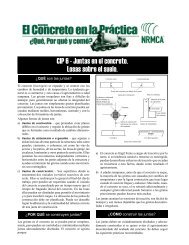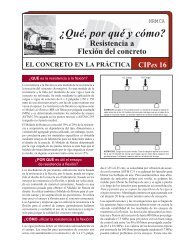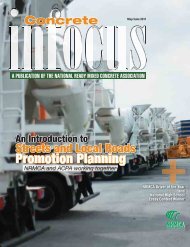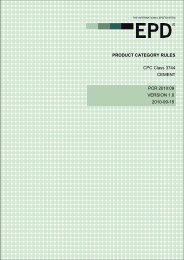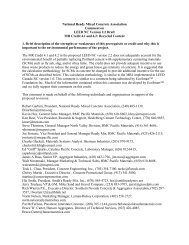Fall 2004 - National Ready Mixed Concrete Association
Fall 2004 - National Ready Mixed Concrete Association
Fall 2004 - National Ready Mixed Concrete Association
Create successful ePaper yourself
Turn your PDF publications into a flip-book with our unique Google optimized e-Paper software.
safety first<br />
The OSHA Inspection –<br />
Are You <strong>Ready</strong><br />
By Thomas Harman, M.S., CSP<br />
Director of Safety Compliance, NRMCA<br />
When OSHA shows up at a ready<br />
mixed concrete plant, and the<br />
compliance safety and health<br />
officer (CSHO) shows his/her credentials,<br />
some plant managers are surprised. Surprise<br />
turns into anxiety when the CSHO begins<br />
asking to see injury/illness reports, training<br />
records, job procedures — in short all the<br />
safety and health items mandated by the<br />
Occupational Safety and Health Act of 1970<br />
that operators must maintain. <strong>Ready</strong> mixed<br />
concrete plant operators can prepare for the<br />
inspection by understanding the audit<br />
process and ensuring compliance as it relates<br />
to our industry.<br />
The OSHA audit process is divided<br />
among three parts: the opening conference,<br />
the inspection and the closing conference.<br />
During the opening conference, the CSHO<br />
presents credentials from the Department of<br />
Labor and communicates the scope of the<br />
inspection; this provides an opportunity for<br />
the employer to ask any questions about the<br />
inspection. For example, a complaint may<br />
have initiated the review. Similarly the<br />
inspection may be a random programmed<br />
inspection or health inspection.<br />
CSHOs first view records and reports.<br />
Employers must maintain the OSHA 300<br />
log and summary for five years. The inspector<br />
may also ask to see the supplementary<br />
injury and illness information, which is a<br />
more detailed description of the injury or illness<br />
event. <strong>Ready</strong> mixed concrete employers<br />
also must train employees in hazard communication,<br />
confined space work, lock out and<br />
tag out, and at many companies, respiratory<br />
protection.<br />
The OSHA representative then starts the<br />
walk-around portion of the inspection.<br />
He/she may go to any portion of the plant<br />
and may privately interview employees along<br />
the way. The inspector will likely ask<br />
employees what types of training the<br />
employer has provided, such as how to operate<br />
a fork lift or how to safely clean out a<br />
mixer drum. The inspector is looking for<br />
validation that employees have received<br />
training that is appropriate for their type of<br />
work.<br />
An employer representative must accompany<br />
the CSHO at all times during the<br />
inspection process. When the inspector takes<br />
notes or pictures, or takes a measurement,<br />
then the representative of the employer<br />
should do the same. Therefore, the employer<br />
agent needs a note pad and pen, a measuring<br />
device such as a tape measure, and a camera.<br />
This ensures that everyone has a clear understanding<br />
of the condition should citations be<br />
issued. In the event that the CSHO conducts<br />
health sampling, as in the case of testing<br />
for exposure to respirable crystalline<br />
silica, then the employer should collect an<br />
air sample, too.<br />
Optional equipment for the employer<br />
rep is a personal dust pump. This ensures<br />
the air sample is valid; the same exposure<br />
level should be seen in each of the two samples.<br />
During the closing conference, the<br />
CSHO reviews findings or recommendations.<br />
The inspector also indicates the conditions<br />
and/or practices that are likely to be<br />
cited. If the employer disagrees with the<br />
inspector’s findings, then the closeout provides<br />
an opportunity to appropriately<br />
address the dispute.<br />
■<br />
38 ı FALL <strong>2004</strong>



